Mimicking conditions of the natural environment in your design is a great way to encourage a home garden to thrive.
Plants don’t grow in neat rows in the wild. They are instead part of greater interconnected ecosystems where different organisms work together so the whole community can flourish.
Guilds employ a method of growing trees and supporting species together in a way that resembles natural plant communities.
Incorporating guilds into your garden can help to improve overall yields while supporting a variety of beautiful and beneficial plants.
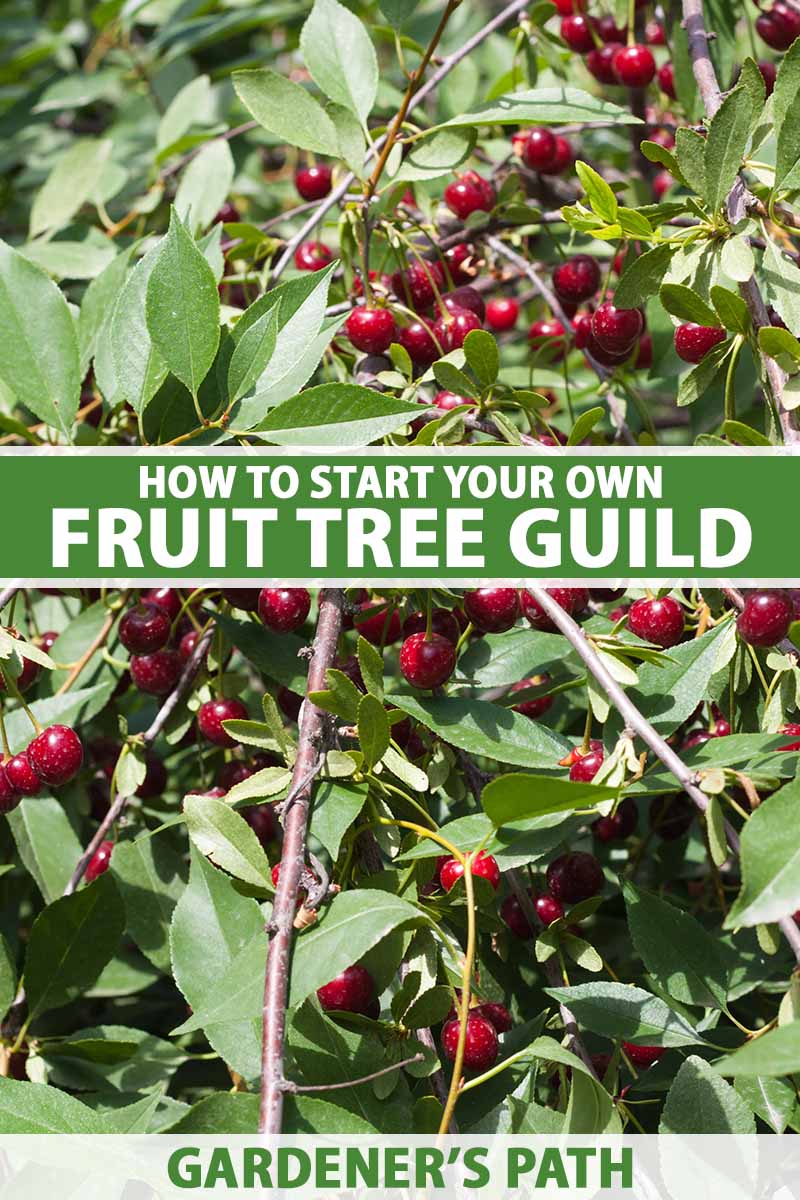
We link to vendors to help you find relevant products. If you buy from one of our links, we may earn a commission.
In this article you will learn more about what a tree guild is, as well as how to create a cherry tree guild that improves fruit production, protects against disease, reduces long-term maintenance needs, and creates a beautiful focal point in the garden.
This information can also be used to adapt to your local region, using plants that are suited to your climate and landscape.
What You’ll Learn
What Is a Fruit Tree Guild?
Simply put, creating a tree guild implements a garden design style that involves planting a tree and surrounding it with other species that will work to support the health of the tree, and each other.
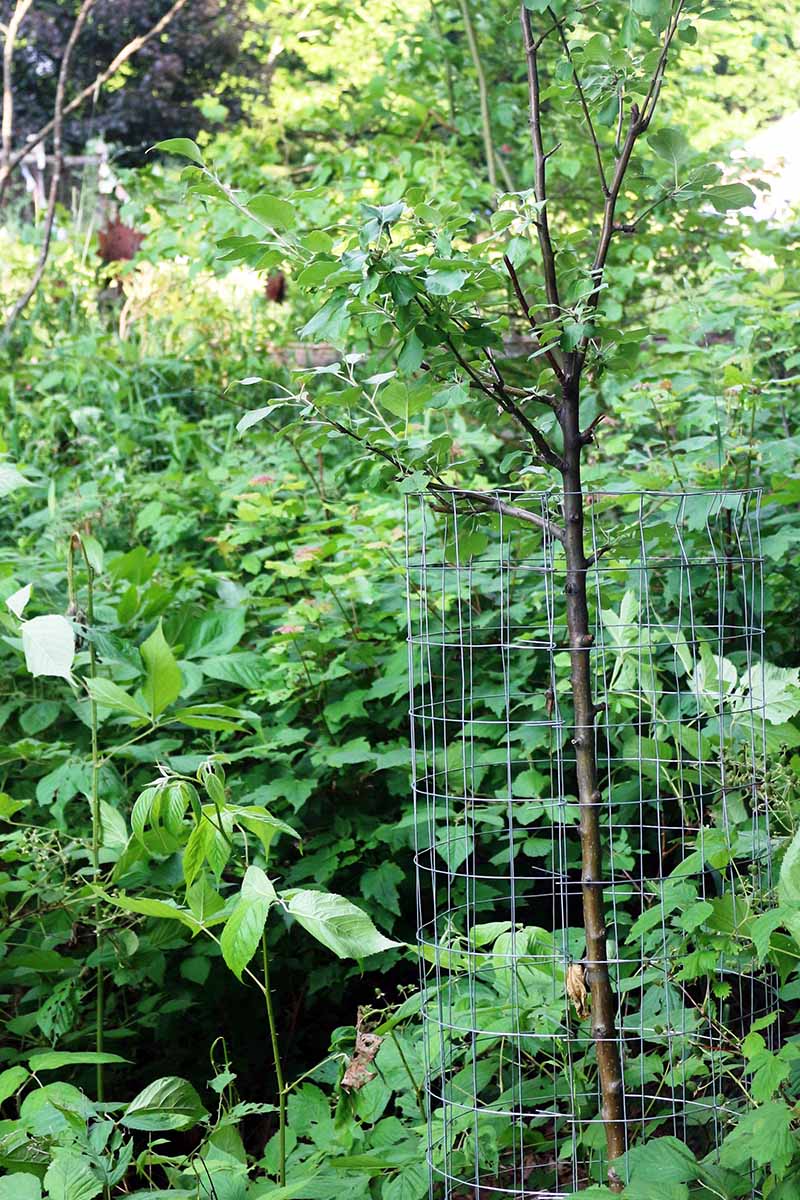
Permaculture is an approach to designing landscapes that focuses on observation of the natural environment to create sustainable, integrative systems.
And creating a fruit tree guild is a technique in permaculture design that is used to create low-maintenance, healthy, and high-yielding gardens.
The basic idea is to look at what we see happening in natural ecosystems and use that information to create gardens that are healthy, balanced, low-maintenance, and self-sustaining.
If you are interested in learning more about permaculture design, I highly recommend reading “Gaia’s Garden: A Guide to Home-Scale Permaculture,” written by Toby Hemenway. This book is available on Amazon.

Gaia’s Garden: A Guide to Home-Scale Permaculture
Another excellent resource is “Permaculture Design: A Step by Step Guide” authored by permaculture teacher Aranya.
You can find this book available from Chelsea Green Publishing.
Applying these principles, instead of planting a single cherry tree in an open field, for example, we can create biodiverse micro-communities by incorporating a variety of plants that serve different important roles, enabling all of the various components to prosper.
With a fruiting cherry or another tree of your choosing as the focal point, we can build a community of complementary species that work together to support healthy soil, improve pollination, reduce issues with pests and disease, conserve water, and increase yields.
Necessary Components of a Guild
Creating a tree guild can be easy and fun!
There are several basic components that are useful in any healthy guild. It is important to include plants that fix nutrients, build soil, bring in beneficial insects, and repel pests.
Oftentimes, certain species are chosen because they serve more than one of these functions. Once you have a sense of the available plants that can play each of these roles, you are ready to get started!
While the following sections of this article will explore specific species that can be included in our chosen example of a cherry tree guild, keep in mind that your climate and soil conditions may be better suited for different plants.
Once you have a basic understanding of the important components, you can easily adapt these recommendations to your specific conditions and preferences, or to accommodate other types of fruit and nut trees.
Nitrogen Fixers
Nitrogen fixers are plants that have roots which are colonized by a specialized group of prokaryotes, including several varieties of bacteria including Azotobacter, Rhizobium, and Bradyrhizobium species.
These bacteria work in symbiosis with plants by taking nitrogen from the air and converting it into a usable form for plant growth.
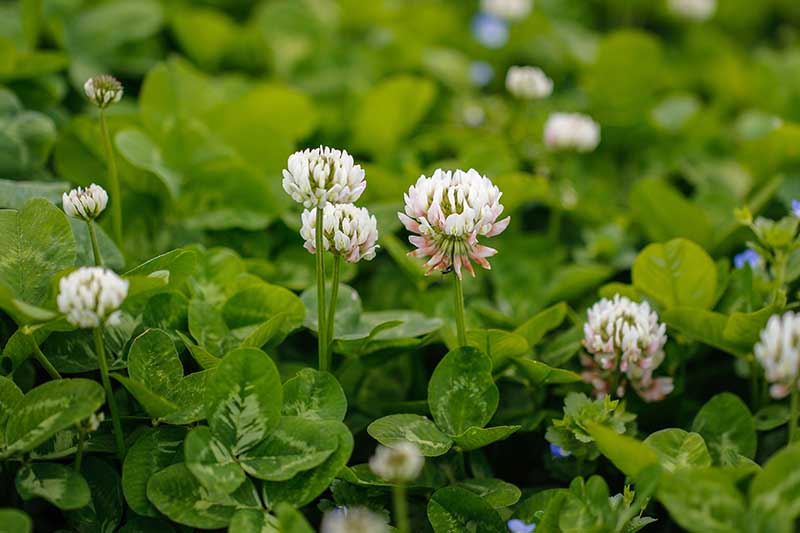
There are a number of plant species that fix nitrogen, including most of the members of the Fabaceae (legume) family. White clover, alfalfa, wild lupines, fava beans, and sweet peas are all fantastic choices.
In general, it is useful to consider plants that may serve multiple roles, as mentioned previously.
For instance, white clover fixes nitrogen and also provides a living ground cover, protecting the soil and helping to retain moisture. Fava beans are also edible, and wild lupine attracts pollinators when it is in bloom.

You can also choose to include young nitrogen-fixing shrubs such as the Siberian pea shrub (Caragana arborescens), goumi (Elaeagnus multiflora), or Senna species, planted in the same hole or immediately adjacent to a newly planted cherry tree.
In terms of maintenance, you will just need to continue pruning back the shrub to about half the size of the tree. After about five years or so, once the shrub has served its purpose of providing extra nitrogen to the young sapling, you can remove or relocate the shrub to avoid crowding out the tree.

Some herbs have deep roots that can draw various nutrients from the soil into plant tissue. Comfrey, licorice, dandelion, yarrow, plantain, and chicory are all useful nutrient accumulators to incorporate into your design.
Tip: In general, try to seek out perennials or self seeding annuals. This way, you only have to plant them once!
Bring on the Pollinators
It is important to encourage beneficial insects that can improve pollination of your plants and eat pests.
Many flowering herbs attract pollinators to the garden. Daisies, lupines, chives, yarrow, fennel, sweet alyssum, oregano, and dill would all work well planted with a fruiting cherry.
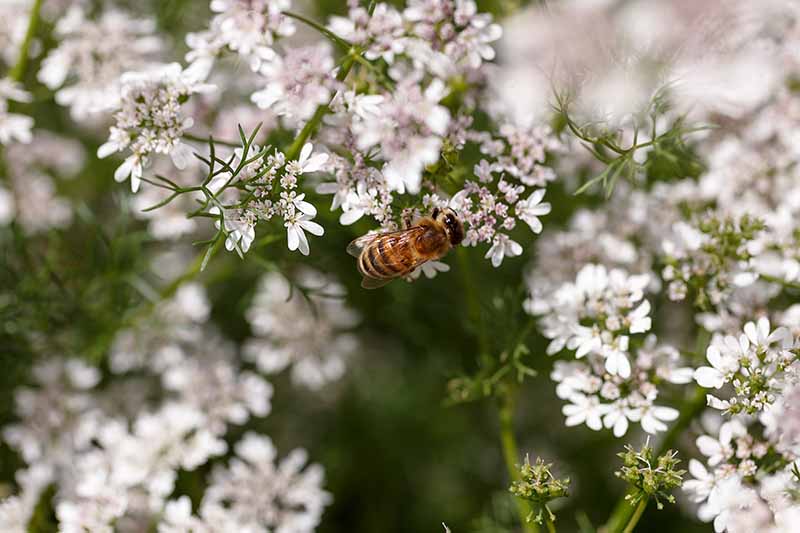
Coriander, angelica, clover, and dill all attract lacewings and hoverflies that like to eat pear and cherry slugs as well, offering these benefits to a cherry or pear guild.
Repel Pests
In addition to attracting insects that will be happy to make a meal of certain insect pests, certain plants can be grown to repel pests as well.
Peppermint, lemon balm, and nasturtiums are examples of herbs that may help to repel insect pests.
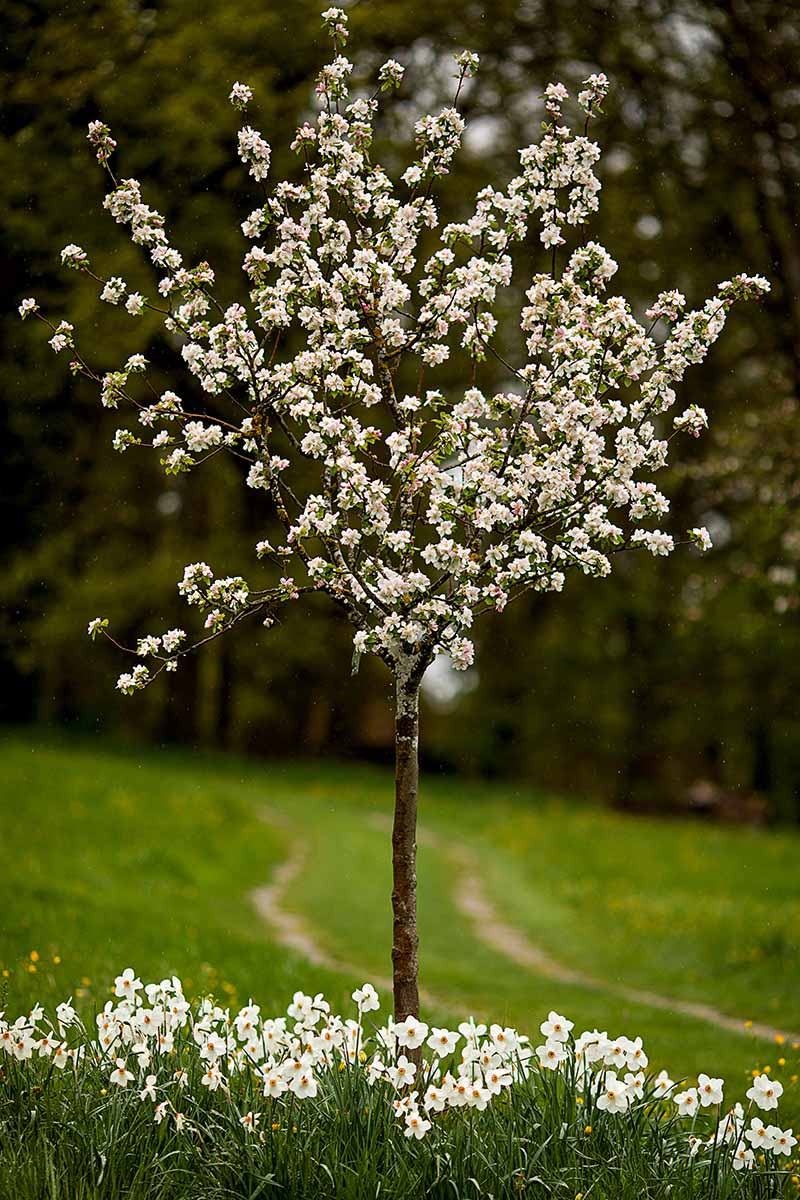
Keep in mind that peppermint and lemon balm both grow and spread aggressively. Be sure to space plants back several feet from the base of the tree, and prune regularly to keep them from crowding out young saplings.
Incorporating garlic or daffodils in a ring around the edges of the planting area will help to deter larger herbivores like deer and rabbits.
Soil Builders
Soil builders are plants with large leaves or dense foliage that can produce organic matter, improve the structure of soil, and make mulch.
Try rhubarb, comfrey, borage, clover, rapeseed, alfalfa, or Austrian winter pea.
Many of these species can be cut to add biomass to the garden, which can be composted and added back to the soil or placed directly on the ground as mulch.
Some of these plants, such as comfrey, have deep taproots that can break up hard subsoils and take up nutrients from deep in the ground, which are then made available to other plants when the leaves are cut and left to decompose.
Creative Additions
There are so many functions plants can serve in a guild, and your options are nearly endless. They can suppress weeds, offer food for wildlife or forage for domesticated animals, add beauty, or provide food for people.
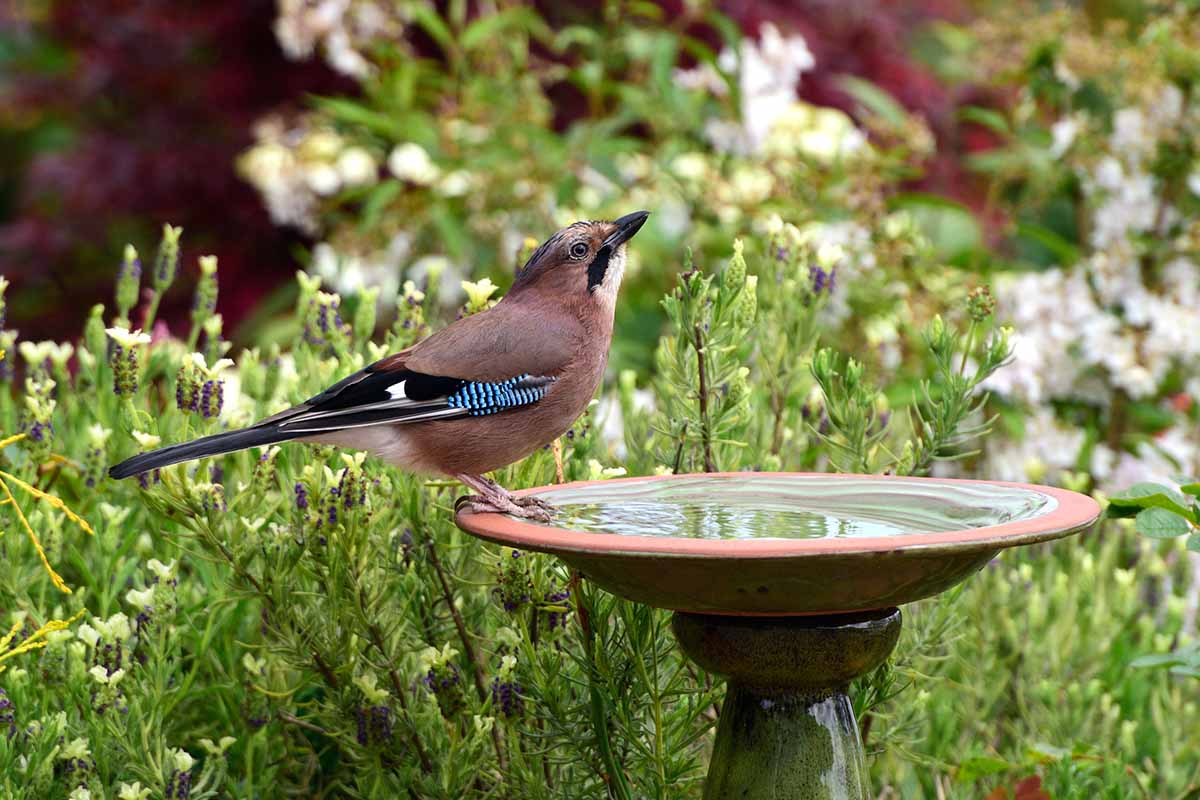
You could even include small ponds or rock nooks to attract frogs, lizards, and birds that can eat slugs and other unwanted pests.
Once you have the hang of it, you can really get as creative as you want. The sky’s the limit!
Guild Design
When organizing a guild, you want to make sure to include plants of varying sizes, and create a design plan that arranges them appropriately. So get out your gardening journal, and get to work!
Consider a forest. Tall maples and oaks are surrounded by smaller understory trees, woody shrubs, and vines, as well as small herbaceous plants, mosses, fungi, and decomposing matter on the forest floor.
Each layer brings something to the whole: habitat for different species, shade for smaller plants, or biomass to build and protect soil.
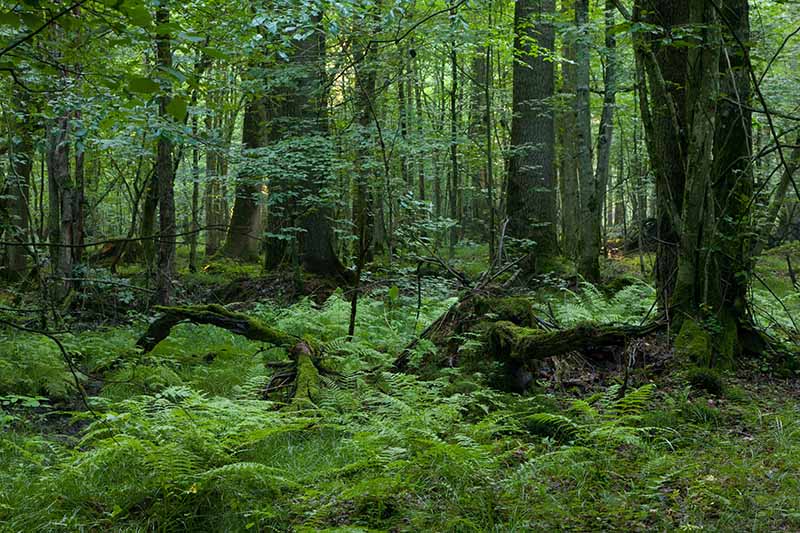
To mimic a biodiverse natural ecosystem, you want to include a variety of layers.
When thinking about what species to use around our example of a fruiting cherry tree, think about how you can stack plants of varying sizes and habits.
With the cherry at the center, work outward from largest to smallest, surrounding the tree first with smaller shrubs and herbaceous plants, with a ground cover interplanted throughout the guild, and then edge the whole thing with bulbs to keep out pests.
Here is one example of a selection of plants that may be included in a guild:
- Cherry tree
- Siberian pea shrub – nitrogen fixer
- Angelica – attracts beneficial insects, provides food, medicinal herb
- Yarrow – nutrient accumulator, attracts pollinators, medicinal herb
- White clover – living mulch, nitrogen fixer, attracts beneficial insects
- Daffodils – deter pests
Innovative Problem-Solving through Permaculture
When creating a guild, you are thinking in terms of plant communities to create your design.
So when problems arise, such as diseases, pests, or nutrient deficiencies, instead of using chemical pesticides and added fertilizers, you can instead adjust your guild to encourage a healthier overall ecosystem.
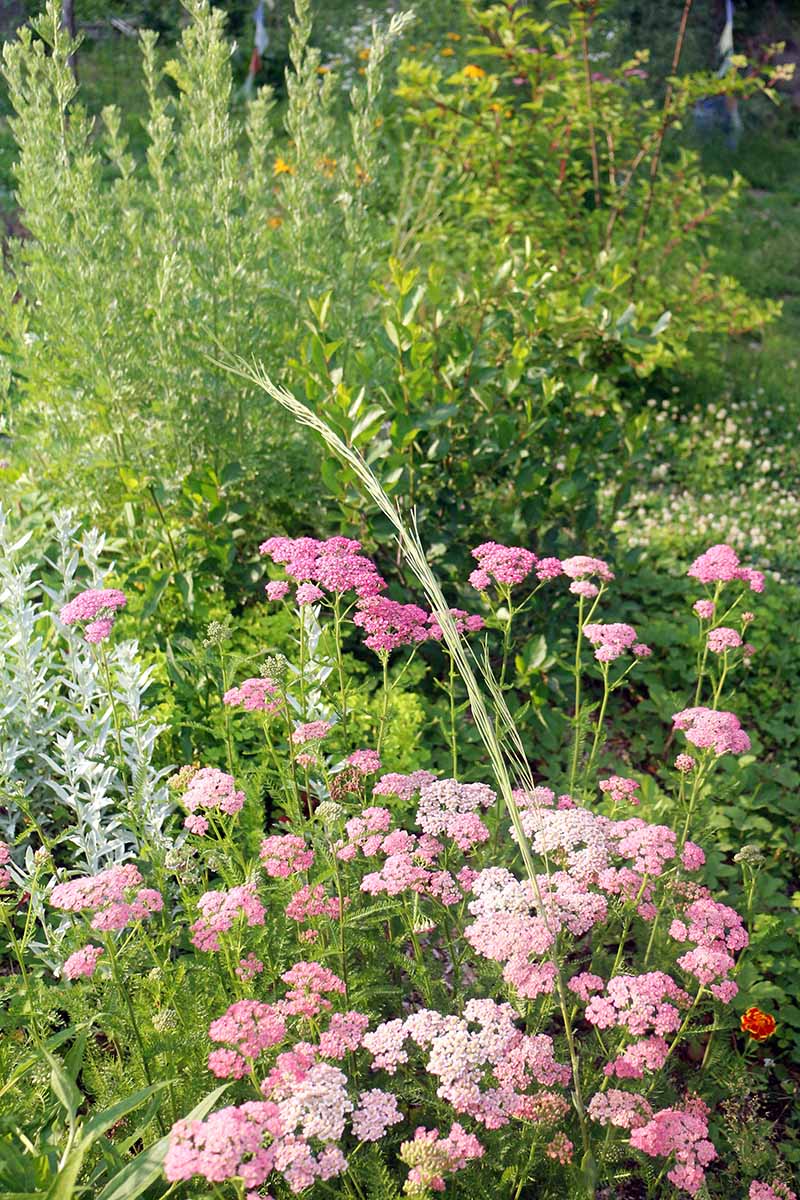
If you encounter a pest infestation, for instance, you can determine which beneficial insects eat that particular pest and add plants that attract those insects.
If you conduct a test and find the soil lacks nutrients, incorporate some additional nutrient accumulators or living mulch.
While this method may not be an instant fix, over time it will grow into a flourishing, diverse community of plants, beneficial insects, and soil organisms that will be healthier, more resilient, and more productive in combination than a tree planted all alone would be.
Grow Your Own Food Forest
Once you get the hang of designing a guild, you can start to build and grow multiple guilds throughout your garden space, ultimately creating a multifaceted garden ecosystem that will provide food, habitat, and beauty year after year.
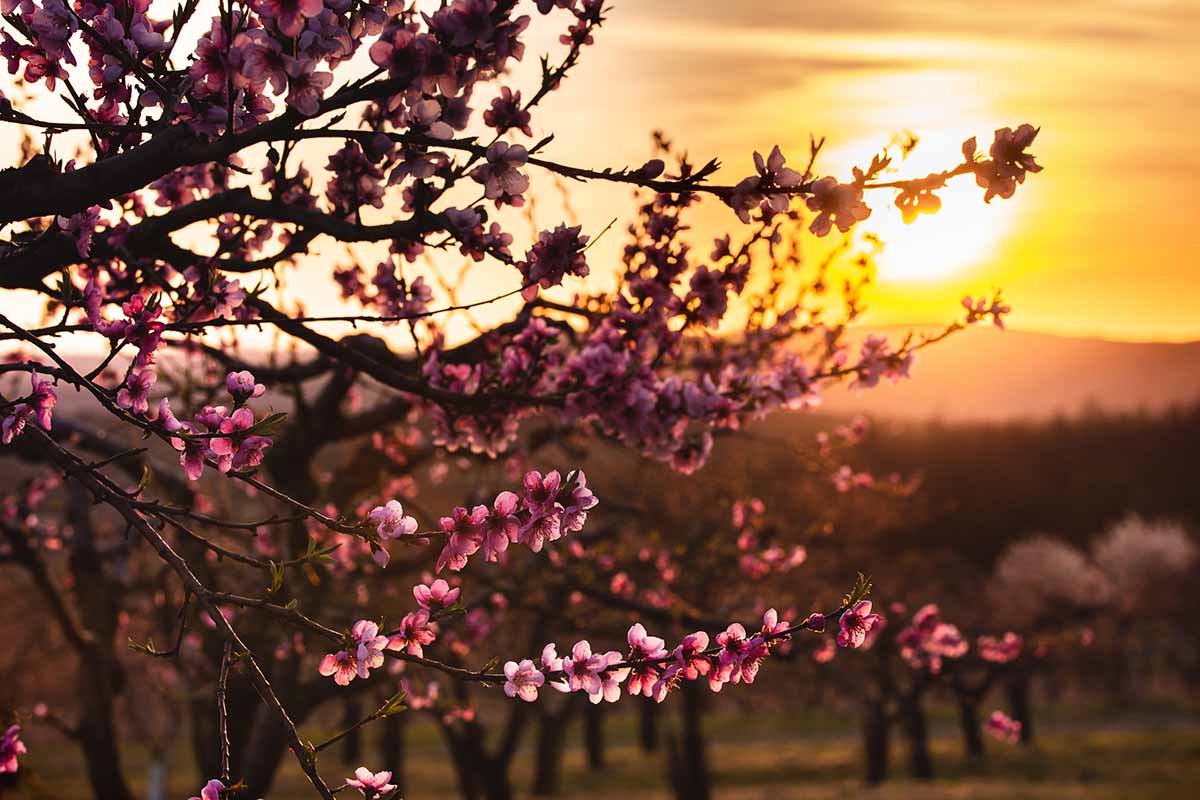
Have you created a tree guild in your garden? Please share your stories and questions in the comments below.
And if you enjoyed learning about sustainable gardening techniques, you will love these articles:
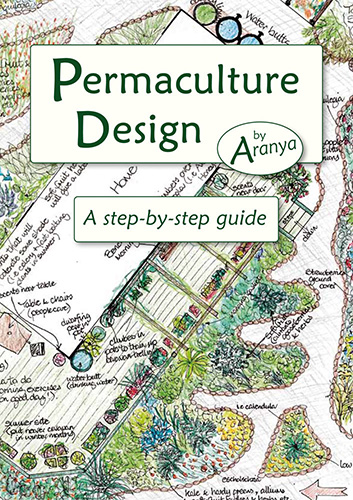
Great concept!
I have both peach & pear trees to plant this spring, I will have to plot some companions for them.
Thank you – excellent article, with a lot of useful tips. Namaste.